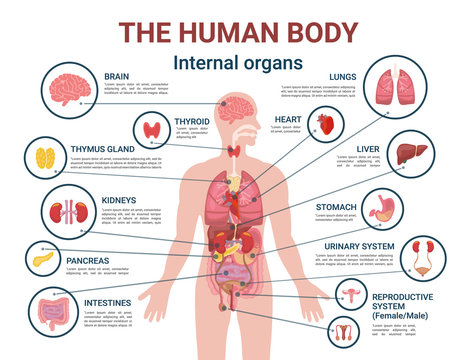Introduction
The human body is a remarkable and intricate masterpiece of nature. From the delicate bones that provide structure to the intricate network of organs that sustain life, the human anatomy is a captivating subject that has fascinated scientists, researchers, and medical professionals for centuries. In this article, we embark on a journey to explore the wonders of the human anatomy, delving into its complexity, organization, and the remarkable functions that enable our existence.
The Complexity of Structure
At the core of the human anatomy lies the skeletal system, a framework of bones that provides support, protection, and mobility. Consisting of over 200 individual bones, the skeleton serves as an anchor for muscles and organs while offering protection to vital structures such as the brain, heart, and lungs. The arrangement of bones varies across the body, allowing for diverse movements, from the dexterity of the hands to the agility of the legs.
Complementing the skeletal system is the muscular system, composed of more than 600 muscles that facilitate movement and provide strength. Muscles work in harmony with the skeletal system, contracting and relaxing to enable a wide range of motions, from the simplest gesture to the most vigorous physical activity. These muscle contractions are made possible by the complex interplay of nerves, fibers, and chemical signals within the body.
The Organ Symphony
Beneath the surface lies an intricate network of organs that perform vital functions necessary for life. The circulatory system, comprised of the heart, blood vessels, and blood, transports oxygen, nutrients, hormones, and waste products throughout the body. The respiratory system, encompassing the lungs and airways, facilitates the exchange of oxygen and carbon dioxide, sustaining the body's metabolic needs.
The digestive system, including the stomach, intestines, liver, and pancreas, processes food, extracting nutrients, and eliminating waste. Meanwhile, the nervous system, with its central hub, the brain, and the branching network of nerves, coordinates and regulates bodily functions, allowing us to think, move, and perceive the world around us.
The intricately designed reproductive system enables the perpetuation of life, ensuring the survival of our species. The endocrine system, consisting of glands such as the pituitary, thyroid, and adrenal glands, secretes hormones that regulate various bodily functions, including growth, metabolism, and reproduction.
Harmony in Health
The human body operates in a delicate balance, and maintaining this equilibrium is crucial for overall health and well-being. Each system, from the immune system that defends against harmful invaders to the lymphatic system that supports fluid balance, plays a vital role in safeguarding the body against diseases and maintaining homeostasis.
The body's ability to heal and regenerate itself is awe-inspiring. Cells constantly replicate, repair, and rejuvenate, ensuring the continuity and vitality of our tissues and organs. The immune system acts as a guardian, identifying and neutralizing foreign substances and pathogens to protect against illness and infection.
Conclusion
The human anatomy is a testament to the complexity and ingenuity of nature. From the interconnected systems that sustain life to the intricate cellular processes that drive our existence, our bodies are a marvel of design and function. Understanding the human anatomy has been a pursuit spanning centuries, and yet, it continues to reveal new discoveries and insights.
By unraveling the secrets of our anatomy, scientists and medical professionals can diagnose, treat, and prevent diseases, enhancing the quality and longevity of human life. As we continue to explore and unravel the mysteries of the human body, we gain a deeper appreciation for its resilience, adaptability, and remarkable ability to thrive in a dynamic world.
Tags:
National

